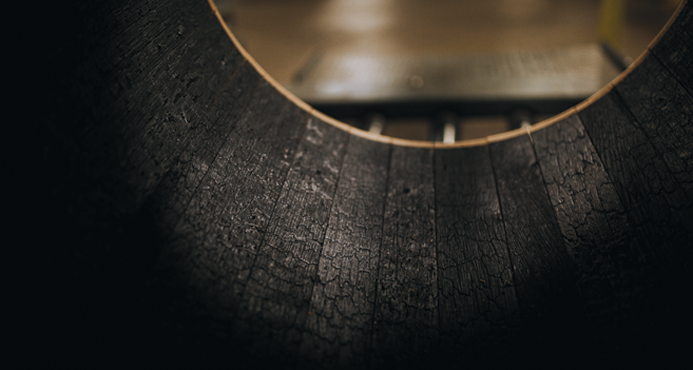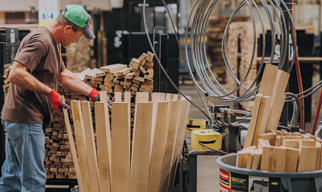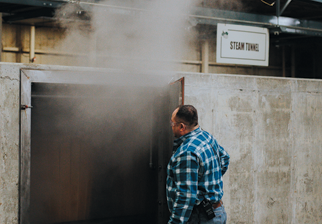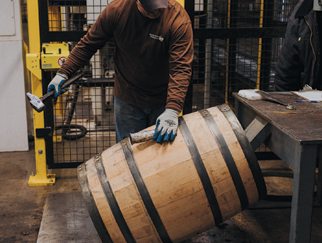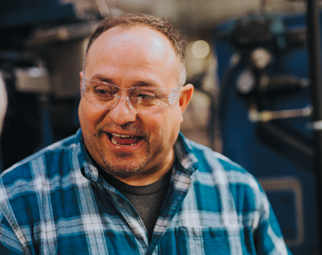Edible Columbus
Roll Out the Bourbon Barrel
Photo by Rachel Joy Barehl
The “char” on the inside of the barrel that helps give bourbon its distinctive flavor. The barrels are charred to the customer’s specifications with a mixture of natural gas and air, then the flames are doused with water. By federal law, bourbon must age in barrels made of “charred new oak.”
A Speyside worker inspects a barrel stave.
Rows of partially built, or “raised” barrels.
A worker inserts the staves into a temporary metal ring, part of the barrel-raising process.
Alberto Ramirez, production manager at Speyside, opens the door to the steam tunnel, through which the barrels travel on a conveyor belt. The steam makes the staves pliable enough to bend into the familiar barrel shape. A finished barrel has no glue or nails, but is held together by “pressure and perfect joint.”
One of Speyside’s coopers, trained by Alberto, disassembles a finished barrel that did not pass inspection. The cooper will repair, reassemble, and retest the barrel.
Alberto shows us one of the steel barrel hoops, whose rivet is embossed with an “S” for Speyside; each finished barrel has six hoops.

